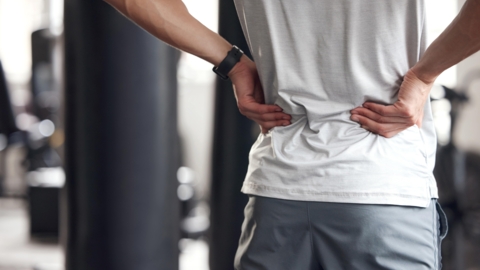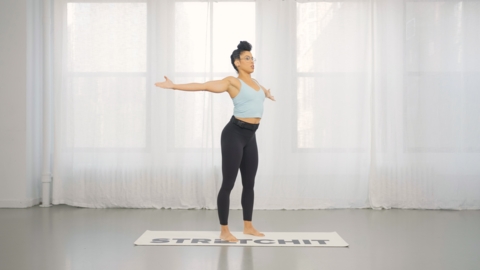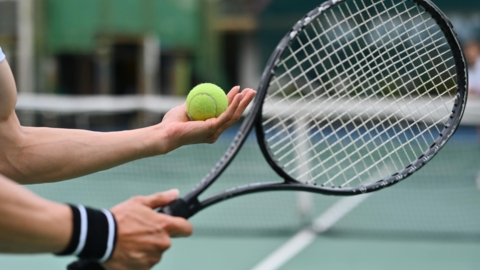The Best Yoga Poses for Stress Relief and Relaxation
Life's a balancing act, and we could all do with a little more daily calm. Unsurprisingly, millions of people turn to yoga for stress relief, relaxation, and flexibility.
But yoga is more than just stretching. It's a practice that incorporates spirituality, physical postures, controlled breathing, and meditation to promote physical and emotional well-being.
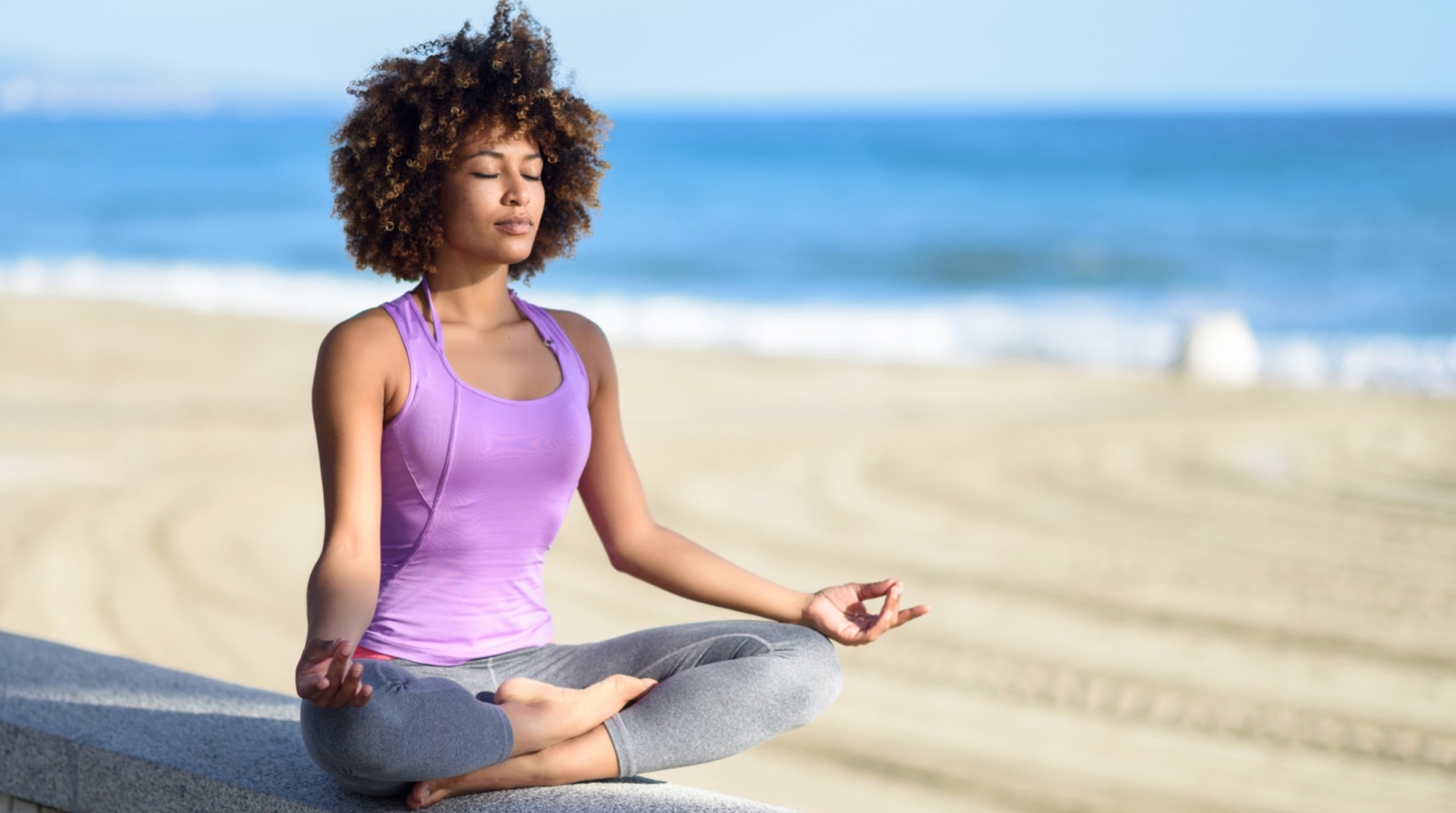
The spiritual side of yoga isn’t for everyone
Maybe you’re looking for a less spiritual, more results-driven approach to improve your mood and flexibility. Enter the STRETCHIT app. We offer a more direct way of reaching flexibility goals by combining the best flexibility practices from various fitness modalities and sports.
And although the goal-oriented flexibility training with STRETCHIT significantly differs from the spiritual and holistic practice of yoga, we also use some yoga poses in the app.
Here are four poses we’ve adopted from yoga.
Four yoga poses for stress relief and relaxation
1. Pigeon pose
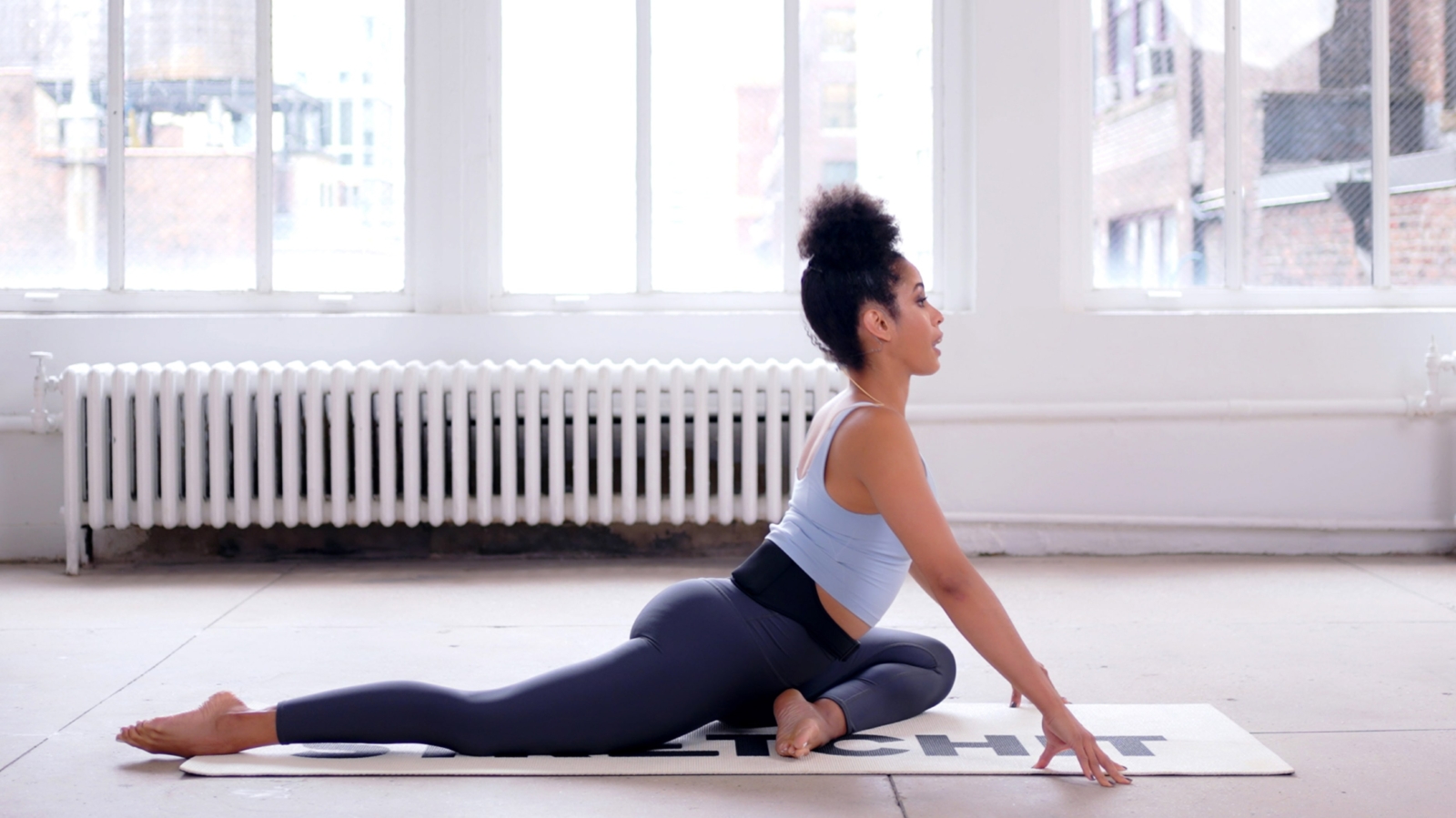
The yoga pigeon pose benefits anyone dealing with the stress and tension of modern life. It’s the ultimate stretch for the areas that often hold stress: your hips and lower back.
Pigeon pose how-to
Start in tabletop: Position yourself on all fours, knees under hips, and hands ahead of shoulders.
Move to pigeon: Slide your right knee towards your right hand, positioning your right foot towards your left hand. Extend your left leg back, knee straight, and thigh on the floor.
Adjust your pose: Ensure your right heel is in front of your left hip, as much as your flexibility allows.
Stay tall: On an exhale, push the top of the head to the ceiling and lift your hands off the ground.
Hold and release: Stay in the pose for 30 seconds to a minute—release by pulling your right leg back to the tabletop.
Remember, the goal is a good hip and lower back stretch, not a specific leg position. There are suitable variations of yoga pigeon poses for any fitness and flexibility level. If your hips feel tight, use a yoga block under your front hip to reduce the range of motion.
2. Child's pose
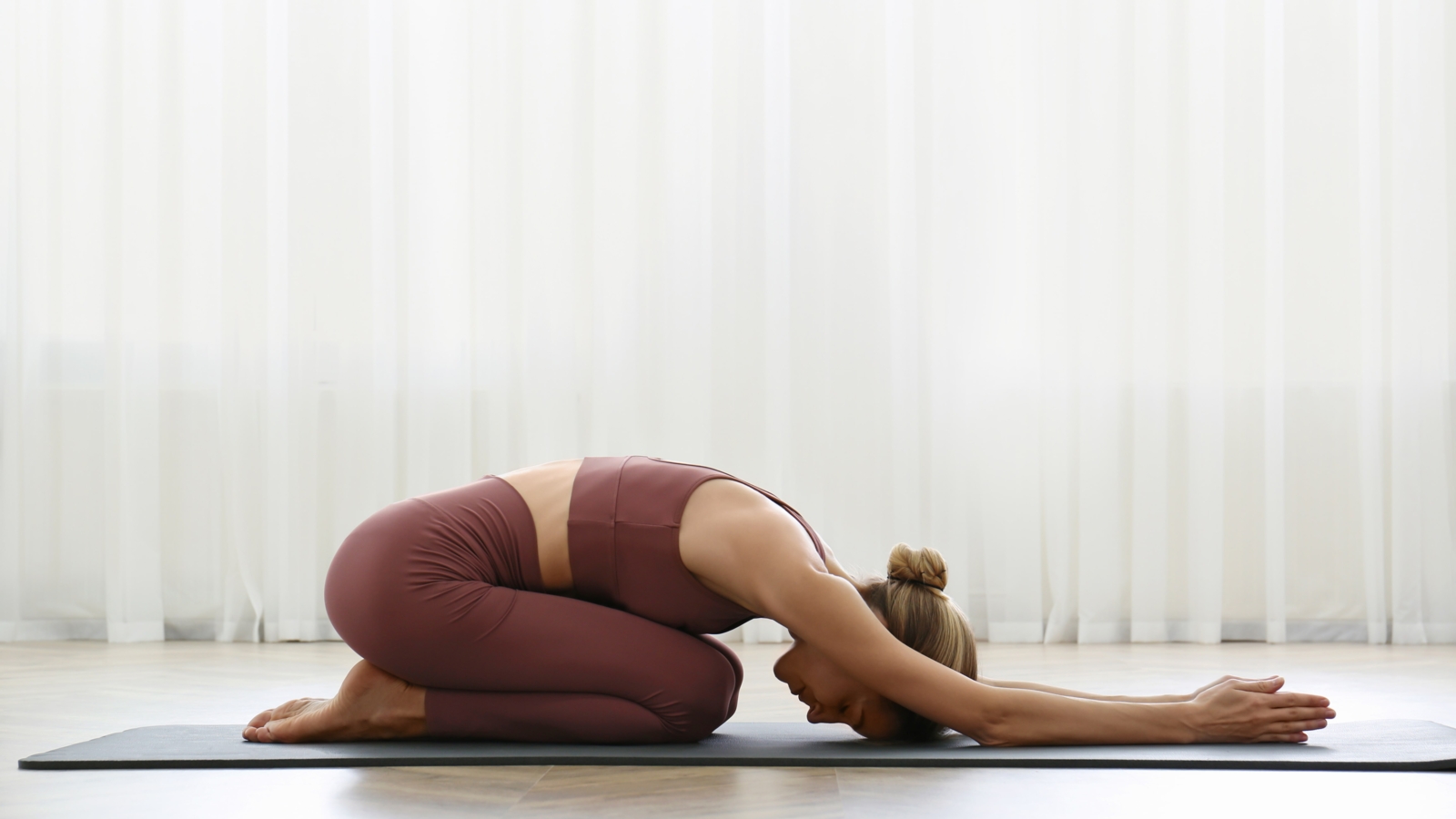
Imagine being in a protective cocoon, stretching and relaxing simultaneously. That's what child's pose feels like. It provides a gentle stretch for your lower back, hips, thighs, and ankles while helping you unwind from the hustle and bustle of everyday life.
Child’s pose how-to
Kneel on the mat: Start on your knees, sitting back on your heels. Keep your knees hip-width apart.
Lower your body: Exhale and fold your body forward over your thighs, stretching your arms out in front of you.
Relax your head: Rest your forehead on the mat. Keep your arms extended, or bring them alongside your body.
Hold the pose: Stay in this pose for a few deep breaths, feeling the stretch in your back and hips.
Release the pose: To release, slowly lift your torso and return to the starting kneeling position.
Listen to your body and adjust as needed. It's all about finding a gentle stretch.
3. Cat-cow pose
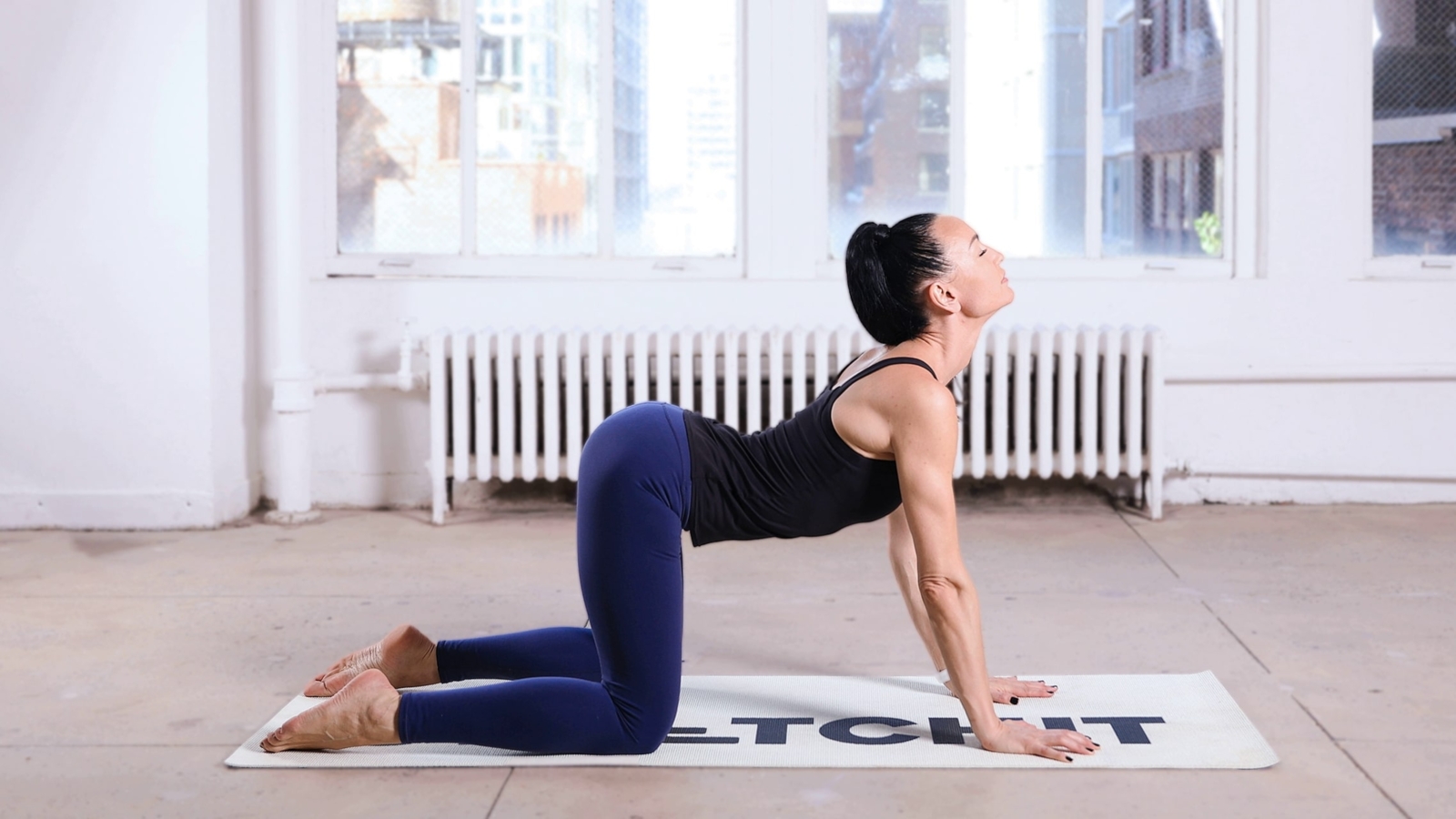
The cat-cow pose is like a massage for your spine. This movement helps increase flexibility in your back while relieving neck, shoulders, and abdomen tension.
Cat-cow pose how-to
Position: best-yoga-poses-for-stress-relief-and-relaxation
Cow pose: Inhale, dropping your belly towards the mat, and lifting your chin and chest.
Cat pose: Exhale, arch your back towards the ceiling, dropping your head to look towards your belly.
Flow: Continue alternating between the two poses with each breath for several cycles. Keep the movement slow and controlled. Move with the rhythm of your breath.
4. Seated forward bend
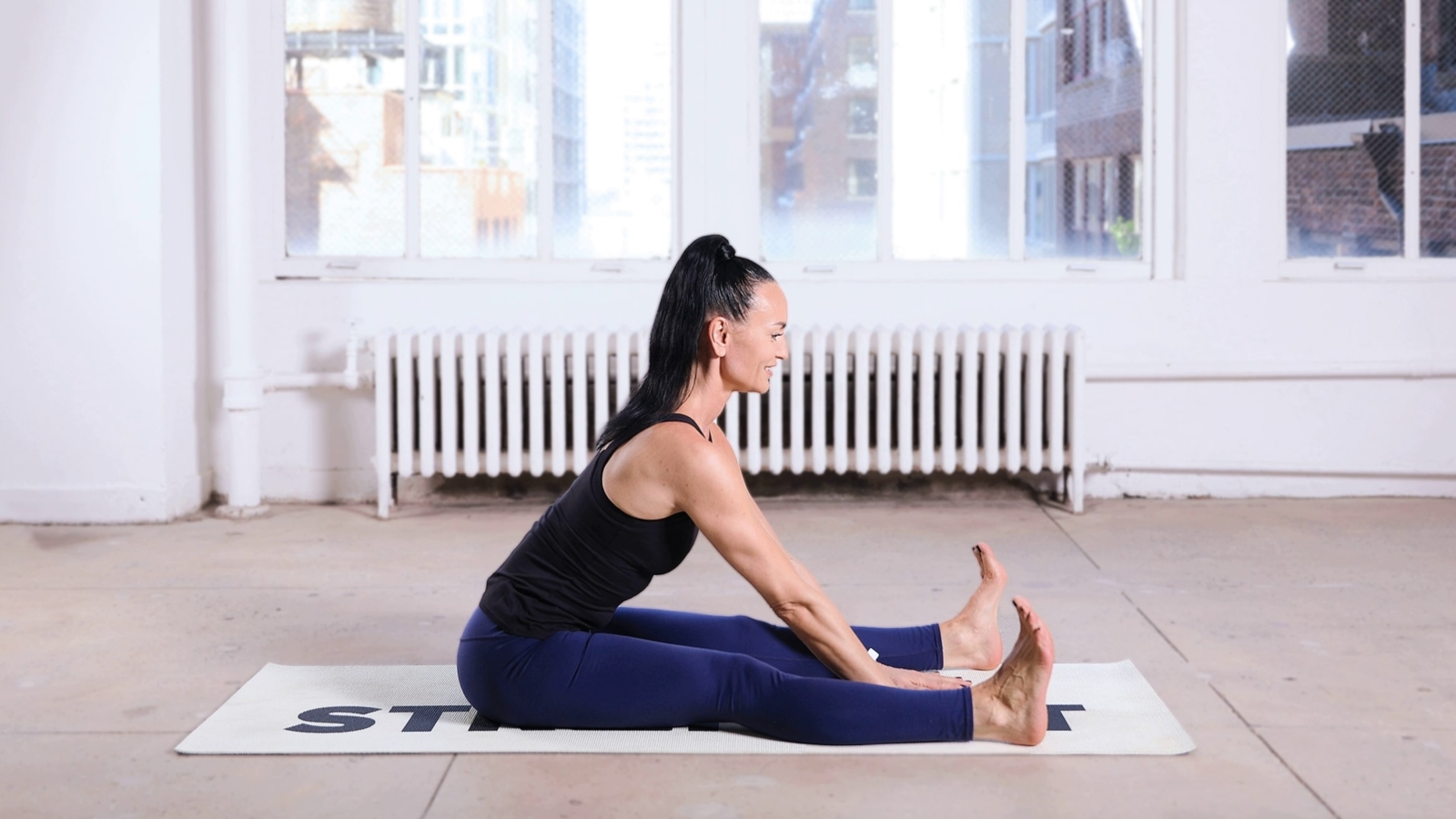
Simple yet highly effective, the seated forward bend targets your spine, shoulders, and hamstrings, providing a calming sensation that can help reduce anxiety.
Seated forward bend how-to
Sit: Sit on your mat, legs stretched in front of you, back straight.
Reach: Inhale and raise your arms, then exhale and bend forward at your hips, not your waist.
Fold: Reach for your feet, if possible. If not, rest your hands on your legs.
Hold: Keep your spine long and neck relaxed, and breathe deeply, holding the pose for a few breaths.
Don't strain or force your body. A good level of intensity is around five out of ten.
STRETCHIT and the new era of flexibility
You might wonder why you would choose STRETCHIT over something as time-honored as yoga. Unlike yoga, which focuses on getting better at yoga, STRETCHIT zeroes in on specific flexibility goals, from nailing those perfect splits to increasing your back flexibility.
Whether your strength and flexibility training goal is to improve sports performance, pole dancing skills or to feel healthier and more connected to your body, STRETCHIT is about making stretching more accessible, enjoyable, and results-driven, regardless of your starting point and time availability.
STRETCHIT draws techniques from various fitness modalities like dance, Pilates, gymnastics, and even yoga. It provides a comprehensive, effective workout that will make you more flexible and help you manage stress and feel good about yourself.
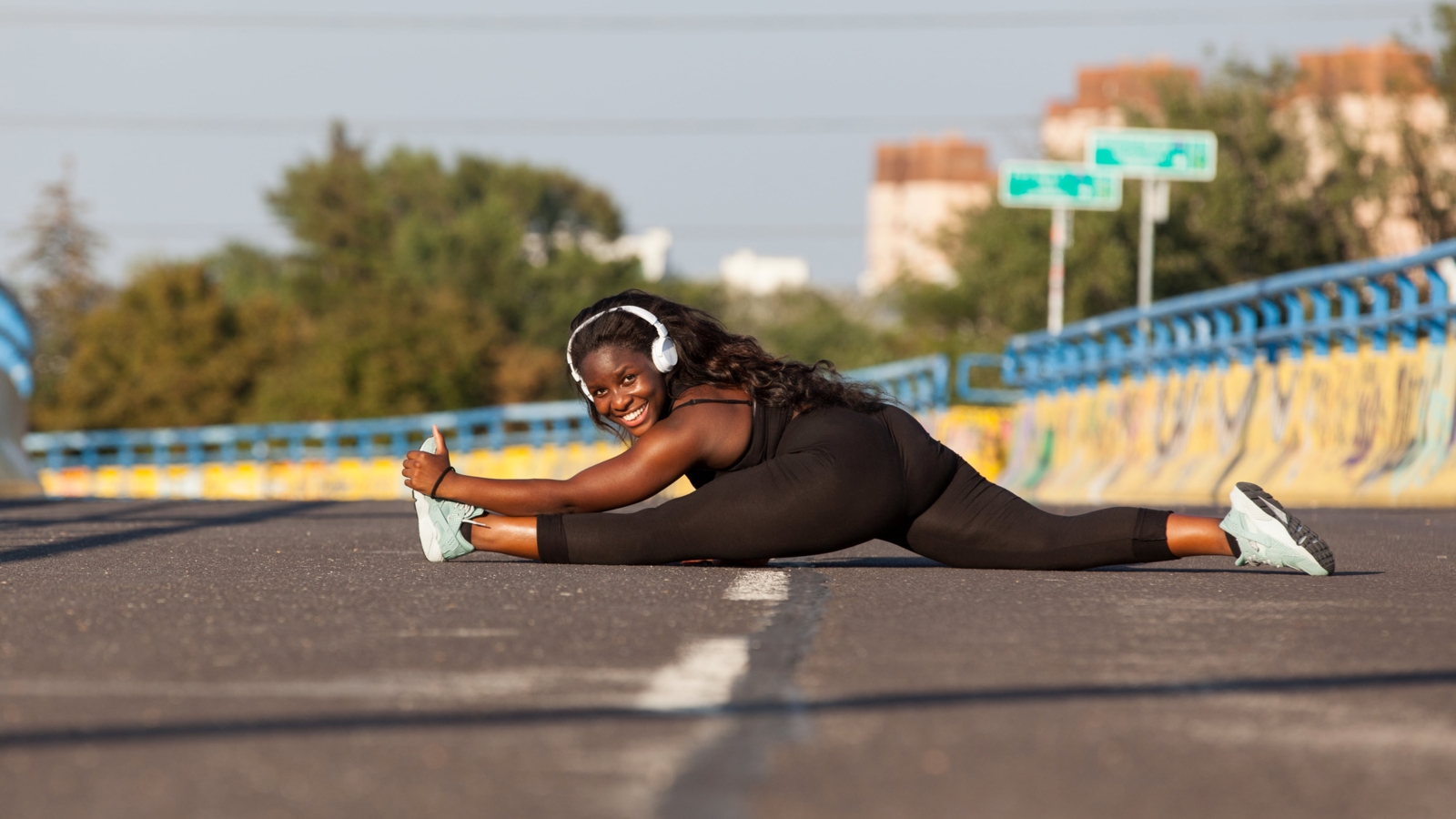
Should you choose yoga or STRETCHIT?
Well, it all depends on your personal goals and preferences. Yoga offers an approach that combines spiritual practice and physical poses with meditation and breathing practices. Often culminating with the goal of becoming better at yoga.
STRETCHIT, on the other hand, is designed to be a focused, goal-oriented tool to help you reach your specific flexibility goals while also providing stress relief and relaxation benefits.
Or why not do both? You could follow the lead of some of our members who use STRETCHIT to improve their flexibility for yoga.
Sign up here today to try the STRETCHIT app for free for 7 days.


